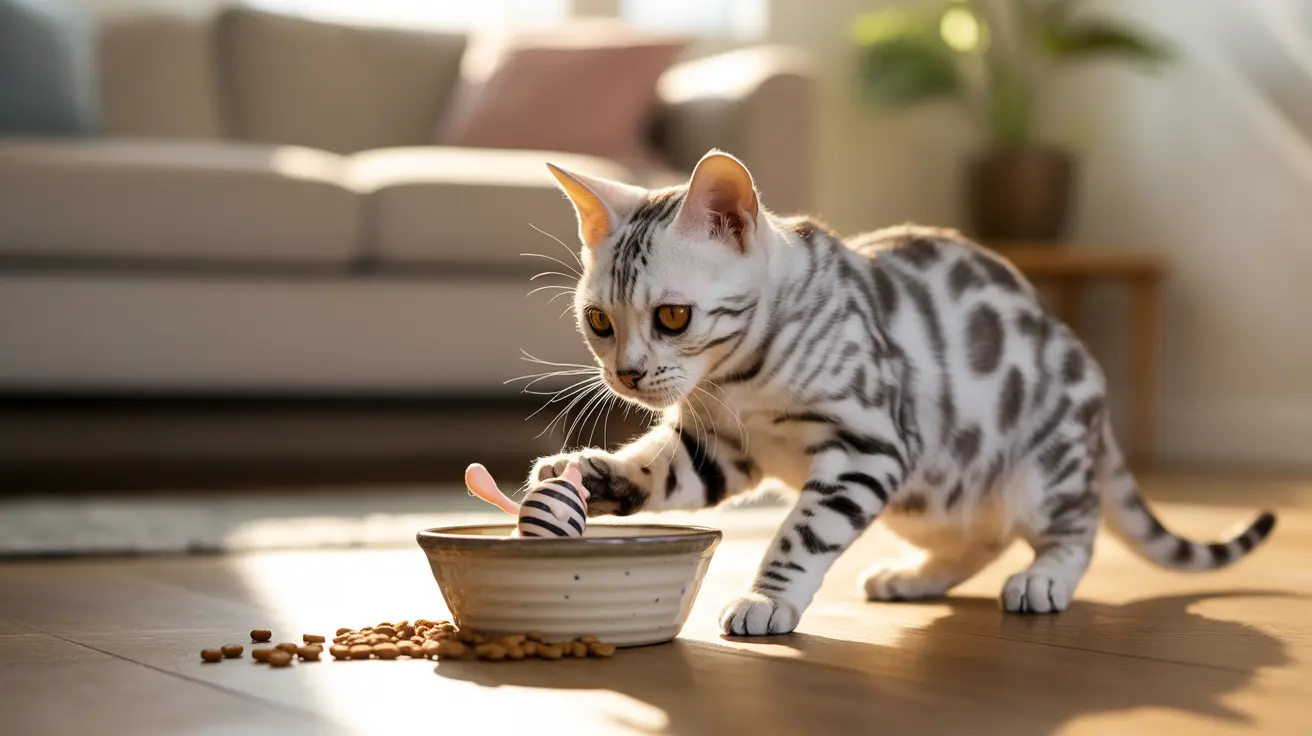If you've ever found your cat's favorite toy floating in their water bowl or nestled among kibble pieces, you're not alone. This peculiar yet common feline behavior has fascinated pet owners and animal behaviorists alike. Understanding why cats put toys in their food bowl reveals fascinating insights into our pets' natural instincts and evolutionary history.
This article explores the various reasons behind this intriguing behavior and helps pet owners better understand their feline companions' natural tendencies and instincts.
The Safe Space Theory: Food Bowls as Security Centers
Cats inherently view their food and water bowls as secure locations within their territory. These areas represent consistent sources of sustenance and are typically placed in quiet, protected spots in the home. When cats place their toys in these locations, they're often treating their bowls as safe storage spaces for valued possessions.
This behavior directly connects to wild felines' instinct to protect their resources and keep precious items in secure locations away from potential threats or competitors.
Natural Hunting Instincts at Play
Many cats treat their toys as "prey," engaging in mock hunting behaviors that mirror their wild ancestors' survival tactics. When they place toys in their food bowl, they're often mimicking the natural behavior of bringing captured prey back to a safe eating location.
This instinctual behavior serves multiple purposes in the wild:
- Protecting the catch from other predators
- Creating a safe space to consume prey
- Storing food for later consumption
The Connection Between Play and Feeding
Cats often combine play and feeding behaviors, which explains why they might bring toys to their eating area. This combination can serve as enrichment, making mealtime more engaging and satisfying for your pet.
Some cats may also use this behavior as a way to:
- Extend playtime during meals
- Create new forms of entertainment
- Express their natural gathering instincts
Territorial Marking and Resource Control
By placing toys in their food bowl, cats may be engaging in a form of territorial marking. This behavior helps them:
- Assert ownership over both the toys and the feeding area
- Create a clear boundary for other pets in the household
- Establish a personal space within their environment
Should You Be Concerned?
This behavior is typically harmless and natural. However, pet owners should:
- Ensure toys are clean and safe for food bowl placement
- Monitor for any obsessive or anxiety-driven behaviors
- Clean water bowls regularly if toys are frequently submerged
- Provide alternative storage spots for toys if desired
Frequently Asked Questions
Why do cats put their toys in their food or water bowls?
Cats place toys in their food or water bowls due to natural instincts related to resource protection, prey storage, and territorial marking. This behavior mimics wild cats' tendency to bring prey to safe locations for consumption or storage.
Is placing toys in the food bowl a sign that my cat sees it as a safe space?
Yes, cats consider their food bowls as secure locations within their territory. When they place toys there, it indicates they trust this space to protect their valued possessions.
How does my cat's instinct to hunt and store "prey" explain the toy-in-bowl behavior?
Cats often view their toys as prey items, and placing them in food bowls mirrors the natural behavior of bringing captured prey to a safe location for storage or consumption, just as their wild ancestors would do.
Can putting toys in the food bowl be a form of play or entertainment for cats?
Yes, many cats find entertainment in moving toys between locations, and some enjoy fishing toys out of water bowls or playing with them during meal times as a form of enrichment.
Should I be concerned if my cat frequently drops toys into their food or water bowls?
Generally, this behavior is completely normal and harmless. However, if it becomes obsessive or interferes with eating and drinking, consult with your veterinarian to ensure there aren't underlying anxiety issues.
Conclusion
When your cat places toys in their food bowl, they're expressing natural instincts that have been passed down through generations of feline evolution. This behavior, while sometimes puzzling to owners, is a normal part of domestic cat behavior that combines elements of hunting, storage, and territorial marking instincts.
Understanding these behaviors helps us better appreciate our cats' natural tendencies and provides insights into their wild heritage, even as they live as beloved household pets.






